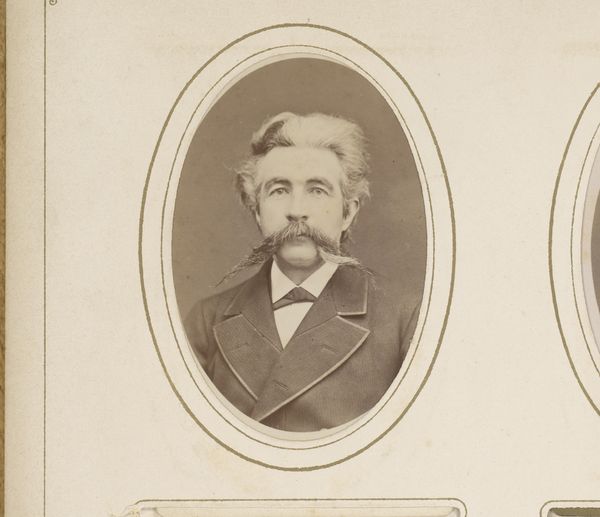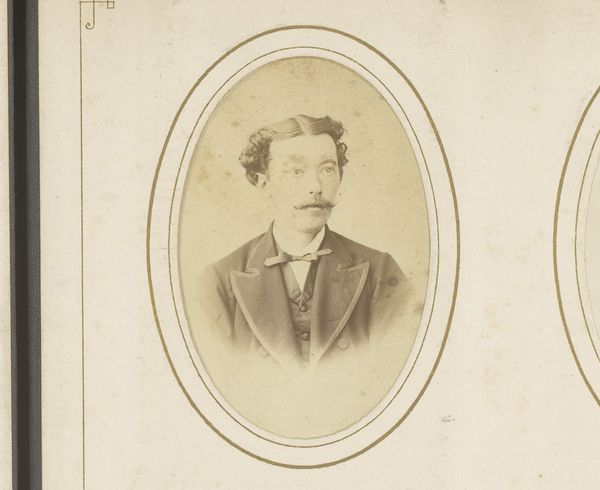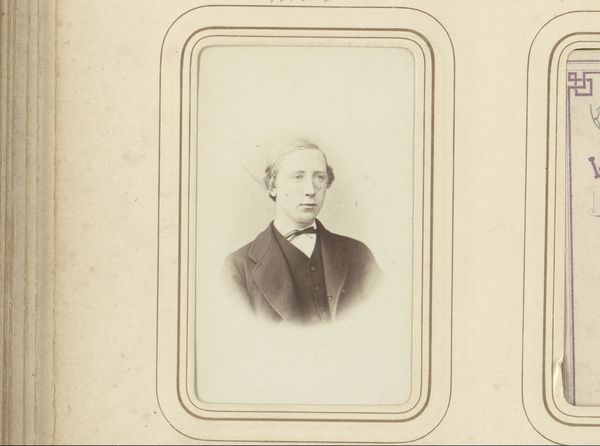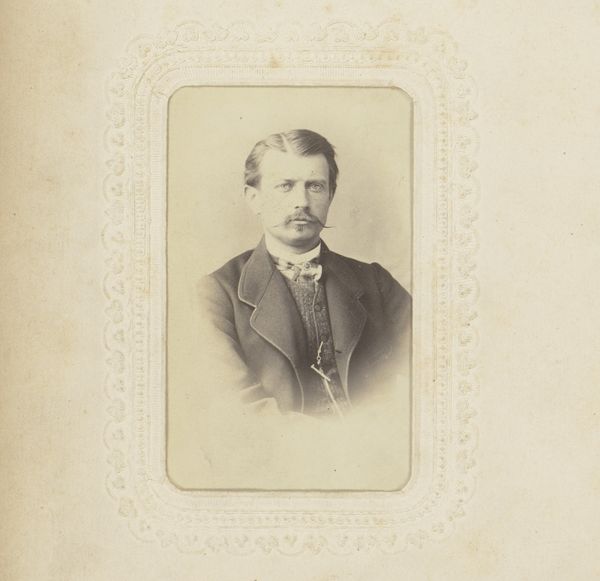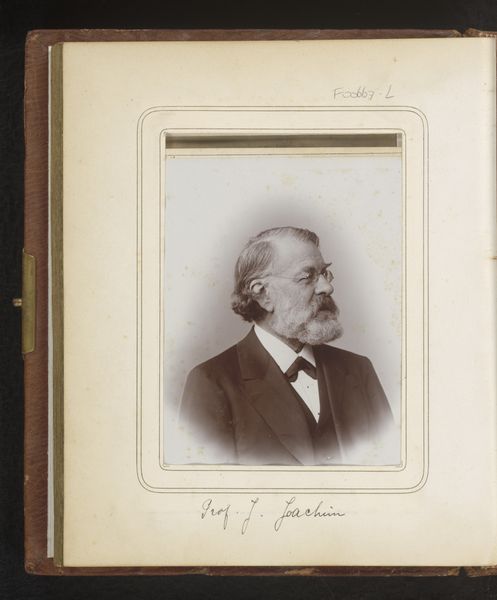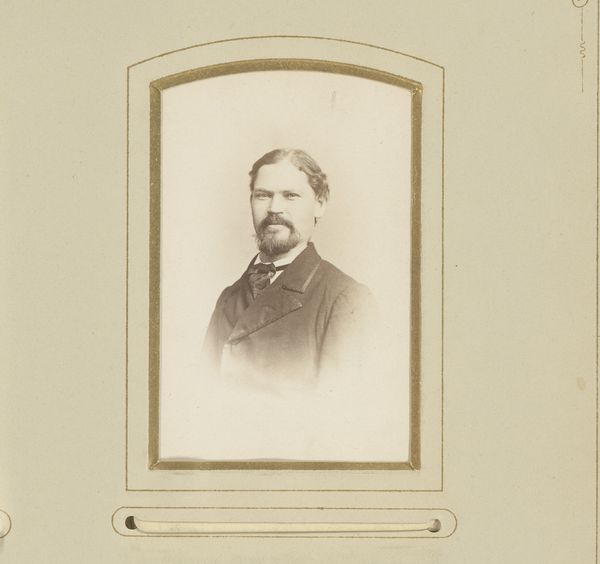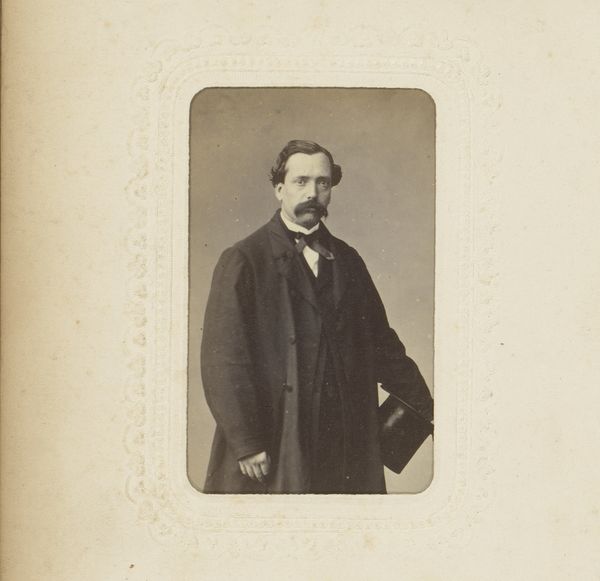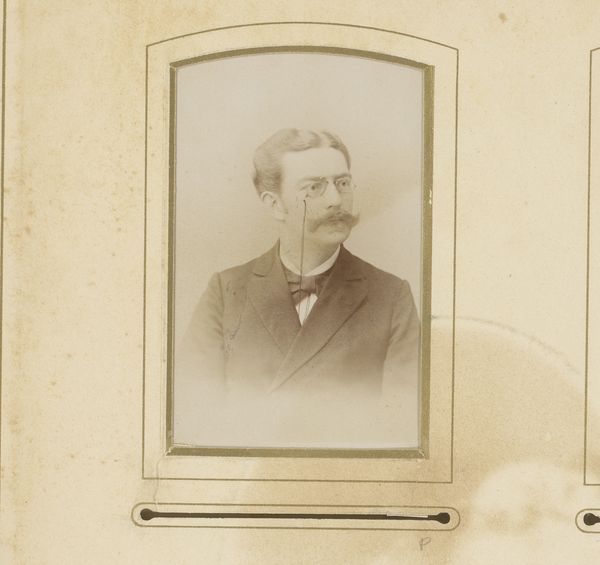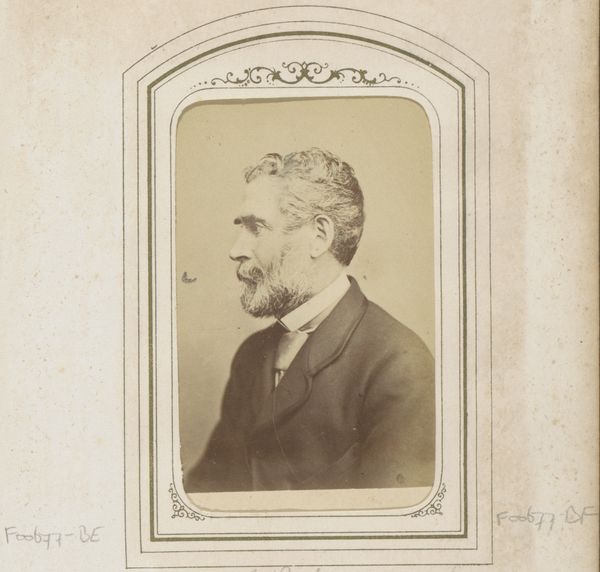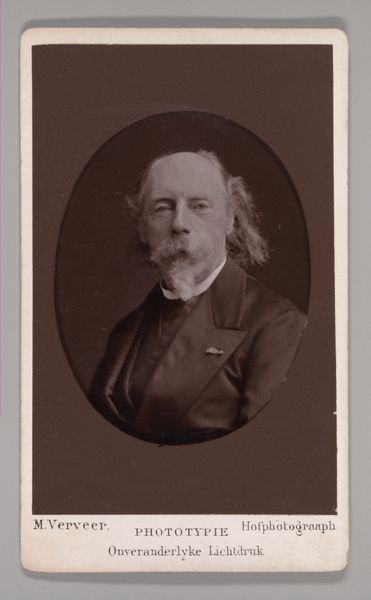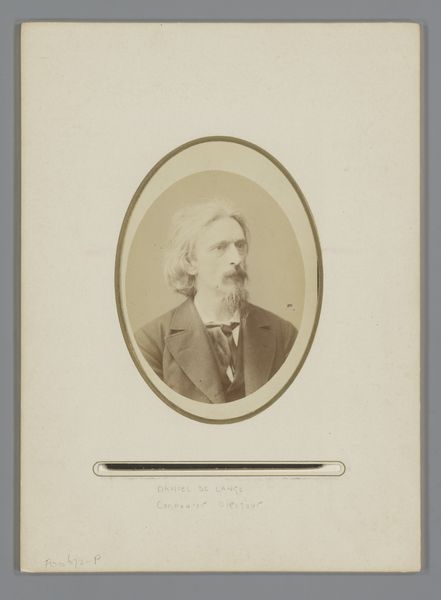
#
aged paper
#
photo restoration
#
historical photography
#
portrait reference
#
old-timey
#
yellow element
#
19th century
#
portrait drawing
#
yellow accent
#
gold element
Dimensions: height 85 mm, width 53 mm
Copyright: Rijks Museum: Open Domain
Curator: Ernst Milster captures Richard Adelbert Lipsius in this portrait dating from 1885 to 1892, a photographic testament to a distinguished era. Editor: The sepia tones lend an air of solemnity, don't you think? A visual texture that softens the edges and invites contemplation. The almost perfect bilateral symmetry is grounding; very appropriate, for an image seeking posterity. Curator: Indeed. Lipsius was a prominent theologian and a leading figure in liberal Protestantism. Consider how the portrait serves to legitimize and project an image of intellectual authority. Editor: Note the ornate frame; the meticulous detail gives the image an almost illuminated feel, emphasizing a certain timelessness. Also, the oval form provides structure—a compositional choice that tightly focuses the eye. Curator: These photographs often circulated amongst the educated middle class, solidifying social hierarchies. Owning a portrait like this would signify adherence to a particular set of intellectual and religious values. How does this affect our view of this subject as an individual? Editor: The choice of soft lighting desaturates detail, flattening his face, emphasizing planes. Also, his eyes seem to reflect very little light. Was this image retouched to create this effect, and how much does the result influence our interpretation of his intellectual rigor? Curator: The formal pose, combined with Lipsius’s attire, tells a story. It reflects a deliberate attempt to present himself as a respected academic. The glasses especially are evocative here, highlighting him as learned and forward-thinking. Editor: But they also create a reflective barrier—distance and mystery. However, if you compare it to photos from this period of writers or painters, say, there’s an undeniable common visual language present. It transcends vocation; and this work achieves an iconic ideal of what is means to represent the professional man in the nineteenth century. Curator: Perhaps what truly defines this work, then, is its status as a carefully constructed representation of the era's values and power structures, not merely as an individual likeness. Editor: I concur; dissecting the interplay of visual language and social context provides richer insights.
Comments
No comments
Be the first to comment and join the conversation on the ultimate creative platform.
